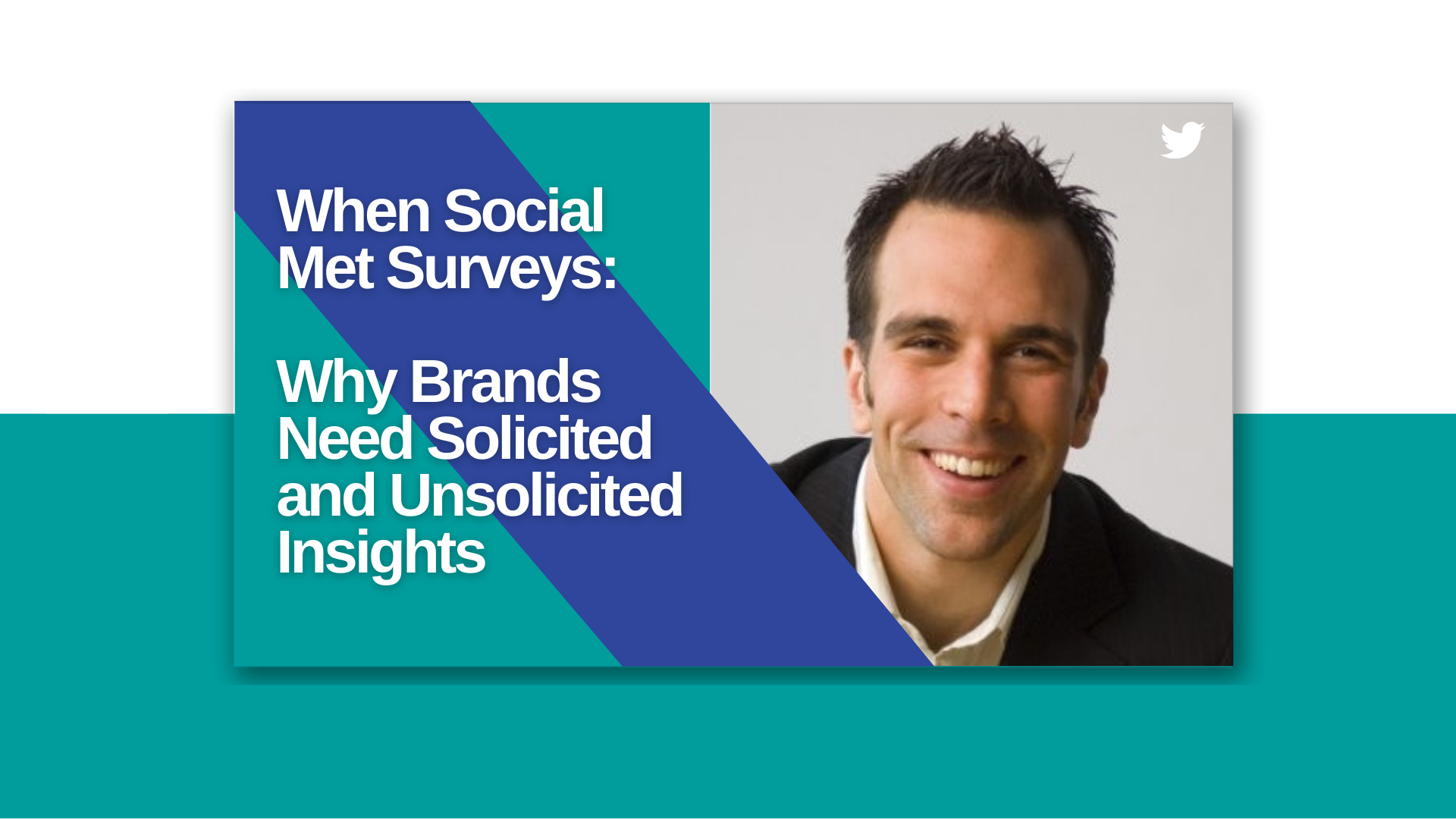When social met surveys: Why brands need solicited and unsolicited insights
A few months ago, Synthesio joined the Twitter Official Partner Program (TOPP) – home to best-in-class technology solutions that are expanding what’s possible for businesses on and off Twitter. Since then, we’ve had the opportunity to work closely with the Twitter team and are excited to deliver joint content and webinars in the coming months (starting with this one on September 15th!).
In a new Synthesio blog post, we heard from Joe Rice, Head of Growth & Strategic Partnerships at Twitter, about why brands need “solicited” and “unsolicited” insights to understand consumer needs and behavior.
Here’s a sneak preview of what he told us.
What's happening?
These two simple words neatly articulate Twitter’s purpose and in 2016 became the Twitter tagline. And while Twitter has always been known as a place for breaking news, perhaps its greatest strength is the insight it provides into the mundane. It's in the millions of opinions shared on anything and everything, from feedback on products and services to people's opinions, moods, and mindsets. To market researchers, these are insight gold.
Unsolicited consumer commentary shared on social media remains vastly underutilized by the industry and yet represents a quick, cost-effective way of understanding consumer trends and preferences in real-time.
Like most professions, market research and consumer insights gathering have undergone tremendous, technology-enabled change over the past few years, however, most of that innovation has focused on improving traditional primary research methodologies, namely the survey. While traditional surveys undoubtedly provide great value, adding the powerful information that comes from the unprompted and from observations of what's being said in the wild, ‘organically’- has been a major opportunity Ipsos and Synthesio have seized. Unsolicited consumer commentary shared on social media remains vastly underutilized by the industry and yet represents a quick, cost-effective way of understanding consumer trends and preferences in real-time. And, by amplifying the literal voice of the customer, social data does so in an authentic way, with a richness and emotion that solicited methods like surveys often lack.
So what is holding the industry back from fully adopting social data and the valuable unsolicited insights it provides?
To find out, read the full article here. And, to learn more about the role social platforms like Twitter play in market research and insights – and how blending data types like social and survey can help brands get a comprehensive picture of consumers – register for our upcoming webinar on September 15th here.



